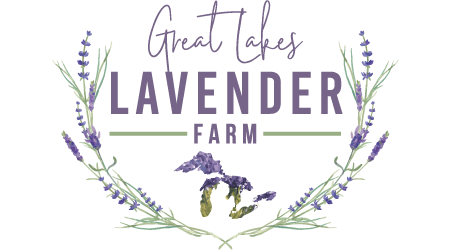
Essence Purple Lavender, a beautiful and fragrant plant, has been cherished for centuries for its soothing scent, vibrant color, and versatile uses. This alluring perennial has a fascinating history and boasts numerous benefits, making it an essential addition to any garden. In this comprehensive guide, we’ll explore the origins, history, uses, growing techniques, harvesting, healing properties, and more of Essence Purple Lavender.
Origins and History of Essence Purple Lavender
Essence Purple Lavender (Lavandula angustifolia ‘Essence Purple’) is a cultivar of the popular Lavandula angustifolia species, also known as English lavender. It is believed to have originated in the Mediterranean region, specifically in the countries of Spain, France, and Italy. The cultivation and use of lavender date back over 2,500 years, with ancient Egyptians, Greeks, and Romans utilizing the plant for its aromatic and medicinal properties.
Lavender has been mentioned in various historical texts, including the writings of the ancient Greek physician Dioscorides and Roman naturalist Pliny the Elder. In medieval times, lavender was used to freshen the air, ward off illnesses, and even as an ingredient in love potions. Essence Purple Lavender, as a cultivar, was developed more recently to improve the plant’s oil yield and consistency.
Uses of Essence Purple Lavender
Essence Purple Lavender has a wide range of uses, thanks to its delightful scent, striking appearance, and beneficial properties. Some common uses include:
- A. Aromatherapy: Lavender essential oil, extracted from the flowers, is popular for its calming and relaxing effects. It can help alleviate stress, anxiety, and insomnia.
- Culinary: The flowers and leaves can be used to infuse flavor into dishes, such as baked goods, teas, and ice creams. They can also be used as a garnish for cocktails and desserts.
- Skincare and cosmetics: Lavender oil is a popular ingredient in skincare products for its soothing, anti-inflammatory, and antiseptic properties. It is also used in perfumes, soaps, and bath products.
- Home décor and crafts: Dried lavender flowers are used in potpourri, sachets, and wreaths to add a touch of elegance and natural fragrance to any space.
- Pest control: Lavender plants can act as a natural deterrent for various insects, including moths, mosquitoes, and flies.
Growing Essence Purple Lavender
Growing Essence Purple Lavender is relatively easy, even for novice gardeners. Here are some tips for cultivating healthy and vibrant plants:
- Soil: Lavender thrives in well-draining soil with a pH between 6.5 and 7.5. Adding sand or gravel to the soil can improve drainage and prevent root rot.
- Sunlight: Essence Purple Lavender requires full sun exposure, ideally at least six to eight hours of direct sunlight per day. This will help promote strong growth and abundant flowering.
- Watering: Lavender prefers a moderate amount of water. Allow the soil to dry out between waterings, as overwatering can lead to root rot and other issues.
- Fertilizing: Lavender generally does not require much fertilization. However, if your soil is nutrient-poor, you can apply a slow-release, balanced fertilizer in the spring.
- Pruning: Regular pruning helps maintain the shape of the plant and promotes healthy growth. Trim the plant back by one-third to one-half in early spring, and remove spent flowers throughout the season.
Harvesting Essence Purple Lavender
To harvest Essence Purple Lavender, follow these steps:
- Timing: Harvest lavender flowers when they are in full bloom, as this is when their fragrance and essential oil content are at their peak. Harvesting should be done on a dry, sunny day, preferably in the morning after the dew has evaporated.
- Cutting: Use sharp, clean pruning shears or scissors to cut the flower stems, leaving a few inches of foliage at the base of the plant. This will encourage new growth and allow the plant to recover more quickly.
- Drying: Tie small bundles of lavender stems together and hang them upside down in a cool, dry, and dark place with good air circulation. Drying should take approximately two to three weeks.
Healing Properties of Essence Purple Lavender
Essence Purple Lavender possesses several healing properties, which contribute to its popularity in traditional and alternative medicine:
- Antimicrobial: Lavender oil has been shown to possess antimicrobial properties, making it effective against various bacteria, fungi, and viruses. This can be beneficial in treating minor skin infections, wounds, and burns.
- Anti-inflammatory: Lavender oil has anti-inflammatory properties that can help soothe and reduce inflammation in conditions such as arthritis, muscle pain, and joint discomfort.
- Antioxidant: Lavender contains antioxidants that can help neutralize free radicals, potentially reducing the risk of chronic diseases and promoting overall health.
- Anxiolytic: Studies have demonstrated lavender’s ability to reduce anxiety and promote relaxation, making it a popular choice for managing stress and improving sleep quality.
- Analgesic: Lavender’s analgesic properties can help alleviate pain associated with headaches, menstrual cramps, and other minor aches.
Conclusion
Essence Purple Lavender is a versatile and captivating plant with a rich history and a plethora of uses. From its calming aroma to its beautiful appearance and numerous health benefits, this cultivar is a valuable addition to any garden, home, or self-care routine. By understanding its origins, uses, growing techniques, harvesting, and healing properties, you can fully appreciate and harness the power of this remarkable plant.









